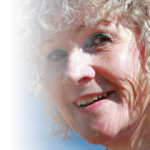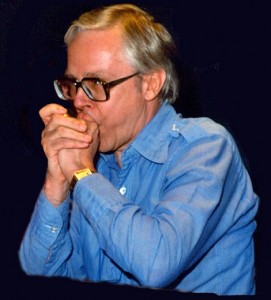 A two-day workshop on “Documentary Storytelling and Film Structure” with Tom Schlesinger was an extraordinary experience for several reasons. At the time, a month ago, I felt as if I were in a liminal space – an in between space out of time – between giving palliative care to a departing mentor/friend and heading off across the country in the hope to open a new door into my future.
A two-day workshop on “Documentary Storytelling and Film Structure” with Tom Schlesinger was an extraordinary experience for several reasons. At the time, a month ago, I felt as if I were in a liminal space – an in between space out of time – between giving palliative care to a departing mentor/friend and heading off across the country in the hope to open a new door into my future.
What deeply impresses me is not just the content of Tom’s seminar yet, moreover, the manner in which he presents himself as a teacher – spiritually centred – although he focuses on the very practical business of screenwriting. His Zen mode is so relaxed that at first I wondered how we would get through the material. Yet, we did.
Tom suggests to seminar participants how the best screenwriting requires a vertical journey of storytelling as well as a strong horizontal storyline. The willingness to take that vertical journey, he emphasizes, is what separates a powerful documentary story from the “reality TV treatment of such a story… TV would flatten the storyline.”
How refreshing to hear a veteran screenwriter, story consultant and trainer, express so clearly how to distinguish a strong documentary narrative from reality TV programs, without needing to be at all judgmental – again, as I would characterize it, speaking from a place of spiritual groundedness.
In fact, he advises all of us not to waste energy blaming and criticizing the challenges in, and threats to, doc filmmaking today. But, instead, we need to focus on how we still can craft a powerful screenwritten story – working together as writers, directors and editors, and in regard to deepening the appreciation of producers about what it takes to create a more marketable film.
Given the outer world focus on marketability of everything these days, Tom himself raises the question pertaining to a major challenge today for documentary filmmakers: “How do you find the confluence of your creative passion and commercialism?” His answer: “The stronger you create your horizontal storyline, the deeper you can go vertically.”
In the current economic climate, Tom recommends “starting with distribution and working backwards.” Given his seminar refrain that the creation of a strong film will require major changes from the original story concept, I asked how does a filmmaker present a story idea on a website, for example, to appeal to funders, but then change it without losing support?
Tom’s answer: “Be diplomatically tutorial.” In other words, “be direct and honest from the beginning, and take the website audience (and the producers) on the journey with you. Inform the audience when your film story requires new and added components, emphasizing how these elements will strengthen the final, more important story.”
The foremost challenge for the documentary filmmaker, however – and a crucial theme of Tom’s seminar – is how we confront, and let go, our own inner obstacles throughout the screenwriting process, such as habits of perfectionism and too much control of the story. “As earthlings we like to control things,” he remarks.
What I consider to be significant in the process that he presents to us, as filmmaking participants, is the following. Essential to the journey for the storyteller is a process that mirrors what is essential for any person in real life in order to journey closer to his or her human potential. In short, the power of a good story is how deeply it resonates with human truth at deep emotional, yet unconscious levels.
Tom’s presentation, therefore, is fascinating for me. The reason is, I personally had taken this inner transformative journey in a real life seven-year spiritual quest, mapping it as a narrative that I hope to publish and use as a template for my own future workshops. The quest is known as either the `hero’s journey’ or `descent to the goddess.’
As well, in the midst of my own experiential journey I also wrote, directed and produced a documentary film Soop on Wheels, in which I mapped my film subject Everett Soop’s life as a `hero’s journey’ – intuitively and unconsciously at the time.
In Tom’s seminar process, he punctuates it by acknowledging the various mentors through his life who imparted their wisdom to him and who influence his work profoundly. Among such mentors is the late, award-winning screenwriter Waldo Salt (Midnight Cowboy, Serpico, Coming Home). Also included are the late renown mythologist Joseph Campbell and visionary philosopher Jean Houston.
The vertical journey described by Tom pertains to the more intriguing aspects about what makes us human and, in turn, what creates the powerful stories that have engaged human beings through millennia. The reason is, we as audiences project ourselves onto the characters in the story. In doing so, we get hooked and want to stay with the story despite our resistances as per human nature.
The challenge for the screenwriter, director and editor, as Tom spells out, is to get past our own resistances as well as projections of our own biases. These inevitably will come up during the development of the story, through interviews with film subjects and even the choice of film subjects, plus surprises both in the field research and the shooting.
Tom points out another challenge related to the current marketplace for documentary films. Our own serious issues are competing with numerous other serious issues in films, that is, those films critiquing what is wrong with the world. But, he cautions: “If you are trying to make the other side wrong, it is not a story anymore.” The result becomes merely propaganda.
Provocatively, Tom suggests: “It helps to shape shift to the other side and it is not condoning what they are doing; but instead you are on a journey to find out why they are doing it.
“Create opposition and understand both sides of the opposition. The role of the doc filmmaker is not about being right, but rather about telling a good story.”
That bit of wisdom is profound. For I suggest, the human imperative today is to develop the capacity to participate in a dialogue that contains opposing views, to be in alignment with the path way to conflict resolution, understanding each other, and healing as fellow human beings in the larger world.
As Tom points out, in his speaking style of exquisite clarity: “It is not a news bulletin that we are moving into a new world right now… We cannot revise old systems… New systems need to be created.” Therefore, important to reflect on, as Jean Houston asks in a video on her website: “Which story are you caught in?”
Indeed, Tom tells us that storytellers need to get beyond the struggling artist complex. We instead must own our choice to find new ways of expression, because that is a role much-needed and meaningful. “The imaginal realm is far more vast… to express this inner vision… This is what is creating our new way, our new world.”
To find out more about the content and approach of Tom Schesinger’s screenwriting seminars and story consultancy, I recommend taking one or more of his seminars, whether you are an aspiring, emerging, mid-career or veteran filmmaker.
Tom provides an excellent map of a film’s story structure, and models the benefit for filmmakers to develop their own psychological awareness, in order both to plumb the depths of a film’s characters and also to engage the audience. His two-fold gift is, first of all, inspire you to rise above obstacles to what is possible, and then ground you with practical advice to get there.
To see his outstanding credentials and read other testimonials, go to Tom’s website.

